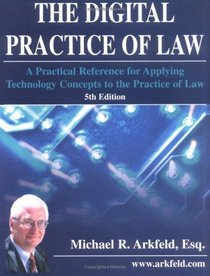Search -
The Digital Practice of Law (Digital Practice Series)
The Digital Practice of Law - Digital Practice Series
Author:
This book has been organized into eight chapters to guide you through the process of automating your practice. This book is a practical reference for applying technology concepts to the practice of law. This book chapters cover in a comprehensive manner the following areas. Chapter 1 entitled The Necessity for Automating the Practice of Law ... more »
Author:
This book has been organized into eight chapters to guide you through the process of automating your practice. This book is a practical reference for applying technology concepts to the practice of law. This book chapters cover in a comprehensive manner the following areas. Chapter 1 entitled The Necessity for Automating the Practice of Law ... more »
ISBN-13: 9780966934700
ISBN-10: 0966934709
Publication Date: 3/1/2001
Pages: 390
Rating: ?
ISBN-10: 0966934709
Publication Date: 3/1/2001
Pages: 390
Rating: ?
0 stars, based on 0 rating
Publisher: Law Partner Publishing
Book Type: Paperback
Members Wishing: 0
Reviews: Amazon | Write a Review
Book Type: Paperback
Members Wishing: 0
Reviews: Amazon | Write a Review
Genres:




